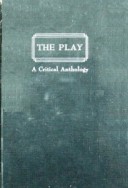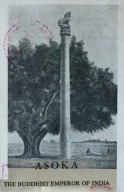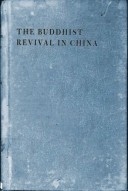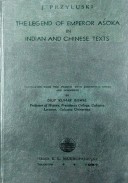The Play – A Critical Anthology
ACKNOWLEDGMENT
IN WRITING the commentary for this book I tried to draw on my experience—however limited—as theater-goer and director. I also learned a good deal from students at the University of Minnesota and the Kenyon School of English. I compiled the present table of contents while presenting a general course on drama at the latter institution. Among the Kenyon students whose brains I am aware of having picked are Miss Beatrice Gottlieb and Mr. Henry Popkin. (The latter’s unpublished essay on Cyrano I found especially suggestive.) The work of another Kenyon student, Mr. Lloyd Parks, is acknowledged in the text where his translation of The Miser appears.
I should like to thank the owners of the copyright in the plays and articles appearing in this book for their permission to reprint them here. Specific acknowledgment of this permission is given at the appropriate place in the text. I should also acknowledge the courtesy of Harcourt, Brace & Co. in granting me permission to adapt two passages from The Playwright as Thinker to a new context in this volume.
Last but not least, the Guggenheim Foundation should be thanked for allowing me to devote a year to setting down my thoughts on dramatic art: an enterprise which included the compilation of this book.
New York City, 1949, Eric Benley
TABLE OF CONTENTS
A LETTER TO THE READER 1
- CYRANO DE BERGERAC, by Edmond Rostand
- HUMBERT WOLFE 10
The problem of translation: This version and others: CYRANO as melodrama: Problem of judging: Begin with standard terms—plot, character, theme, spectacle, dialogue: Primacy of plot: Rostand’s “artificial” characters: Special artifice of his CYRANO Theme—life as a performance: But theatricality more important than theme—as witness plot, character, theme, spectacle and, especially, dialogue: The collaboration of Wolfe and Laughton
- THE IMPORTANCE OF BEING EARNEST, by Oscar Wilde 148
As CYRANO is a “complication” of melodrama, IMPORTANCE is “complication” of farce: The ridiculous story, the stream of comment on serious topics: How these two elements interact to their mutual advantage: The plot, having to counterbalance all the rest, gains importance: The comment, as defined by the plot, comes to be effectively true
- THE MISER, by Molière LLOYD PARKS 214
Demands made by a play written long before our time: The two historical backgrounds—social and theatrical: Louis XIV and the commedia dell’arte: Desirability of knowing France and French: Difficulty of Molière for the foreigner: Chief point of contact between him and us—our comedians: Help needed from descriptive critics (e.g., Bergson, Stoll): Comic repetition: Comic coincidence Molière’s acceptance of artifice (cf. modern distaste for): His use of artifice to make points, to note traits: Yet plot, not character, is basic: Plot “unrealistic” but used for presentation of reality : Plot a machine for definition of subject: Parallelism and contrast: Molière’s special genius
- TWELFTH NIGHT, by William Shakespeare 285
Shakespeare easier for US to approach: Can and should be seen on stage: Elementary tips on reading him (vocabulary, scene division): Two components of TWELFTH NIGHT (romance and low comedy) alternate to define Shakespeare’s subject: Shakespeare’s themes not always easy to locate, therefore procedure recommended to novice —take any important idea involved and trace its treatment through a play: Love in TWELFTH NIGHT: Love at different levels: Love true and false: A story as “education” of one character by another—Viola, as teacher of Olivia and Orsino: Feste—a convention humanized: His place in an action where appearance mocks reality: Total pattern of play—conventionality of main plot, realism of subplot: Topic for further investigation— language and symbolism
- OTHELLO, by William Shakespeare 372
Is the difference between a comedy and a tragedy (for Shakespeare) more than one of degree?: OTHELLO treats same contrast of appearance and reality as TWELFTH NIGHT but pushes it further: Tips for reading: (1) read with sense of musical organization (though beware of “just listening”), (2) keep the sense of plot as basis acquired from reading melodrama, farce, and comedy, (3) be on guard for anachronisms in your “natural’’ responses to (e.g.) Shakespeare’s version of marriage: conventions again—how we are to take (1) a conventional plot, (2) conventional characters (Iago, Desdemona): Difference of opinion as to Othello
- ANTIGONE, by Sophocles
ADAP. JEAN COCTEAU TR. CARL WILDMAN 489
How far can we understand authors so far removed in time? And read in translation?: Need for adaptation: Cocteau’s bird’s-eye view: The story of KING OEDIPUS: The categories of Aristotle—Antigone an “action,” not a portrait: Is Creon the villain?: Greek attitude to law: To Unwritten Laws: The meaning of the play now The idea of humanity: Edmund Wilson’s view—Antigone as neurotic: Form—alternation of episode and chorus: Role of latter: Merits and shortcomings of Cocteau version
- GHOSTS, by Henrik Ibsen EVA LEGALLIENNE 518
Again realism: So-called realistic works have unrealistic elements and vice versa: Ghosts famous for its realism but not without artifice: Ibsen’s technique—the retro spective method: Ibsen’s subject-matter (but is syphilis what the play is about?): Triple symbolism of its title: Double tragedy of Mrs. Alving: Drama of ideas?: Ibsen’s attitude to ideas: What view of life does the play present—that “society is to blame”?: Important to work over all the details for oneself: Samples—ironical contrast of rain and sun, ironical parallel of Engstrand and Manders: Ibsen’s notes for the play
- THE GHOST SONATA, by August Strindberg ELIZABETH SPRIGGE 588
An allegedly nonrealistic play, a fantasy: Difficult because of (1) abstruse ideas, (2) heavy use of nonverbal arts of theater: Scene by scene analysis: The main lines of the action: The leitmotif of guilt: Repeated images—creditors and vampires: The idea of the play: Does it grow out of the action or is it wishfully imposed?: Form: a visual myth: Technical originality but produced by morah-ideological energy: Musical in structure yet a realistic study of life: Similar to Ghosts: Middle-class civilization haunted by guilt
- DEATH OF A SALESMAN, by Arthur Miller 629
The reader his own drama critic: Reviews of the play—Brooks Atkinson, Ivor Brown, John Mason Brown, Eleanor Clark, Frederick Morgan
APPENDIX 755
Style and Medium in the Motion Pictures, by Erwin Panofsky
SUGGESTIONS FOR READING 777
 Facebook
Facebook
 Google
Google
 Google+
Google+










